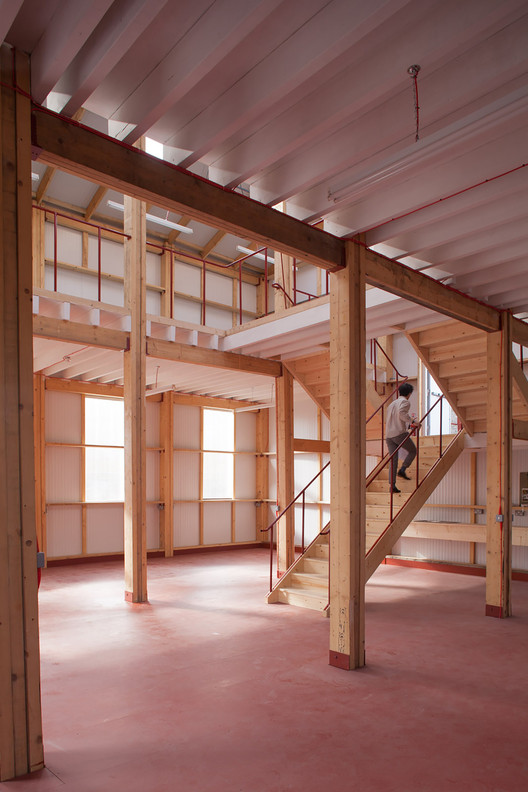
-
Architects: Assemble
- Area: 250 m²
- Year: 2014
-
Photographs:David Grandorge
-
Manufacturers: Kingspan Insulated Panels

Text description provided by the architects. Yardhouse is a new affordable workspace building based in Sugarhouse Yard, designed and built by Assemble. It was jointly funded by Assemble and the London Legacy Development Corporation.

The building is seen as a prototype for high quality new-build affordable workspace provision. It is based on utilising interim use sites as an affordable source of land alongside an economic, modular approach to construction. Given the short life-spans of these sites, the building system is designed such that it can be de-mounted and re-assembled elsewhere.



Yardhouse is arranged as a simple 2 storey, 3 aisled structure occupying a square footprint of 12m x 12m with a total internal floor area of 250m2. The side aisles serve as private studio spaces - broken down by the structural frame into sixteen equally sixed 12m2 studio plots. Spaces are provided without partitions, but tenants are free to adapt their space to suit their practice, combining adjacent units or enclosing their space for greater privacy.

The central, double height space serves as circulation and communal work area. The main structure is formed with a robust barn-like timber frame enclosed with an off-the-shelf Kingspan insulated cladding system. The elevation facing onto Sugarhouse Yard is treated as its primary frontage and clad in decorative concrete tiles handmade on site.

Through its economic approach to construction, the project provides the generous scale, light quality and ceiling heights appropriate for creative uses at a fraction of the cost of a conventional new build. Constructed for less than £80,000, the project presents extraordinary value for money and guarantees the spaces provided can be affordably let to its end users. The building was fully let prior to completion, oversubscribed with 10 applicants for every space.

The layout and letting of the building reflect an aspiration to create a sociable and collaborative work environment, providing a valuable way for creative practitioners to expand their frame of reference, learn new skills and work with others. The building is provided for designers and artists who engage in hands-on, practical work. It is not seen as a quiet, desk-based work environment but home to a range of messy, noisy, tactile and experimental processes.
Note: This project was originally published in July 21, 2014






















